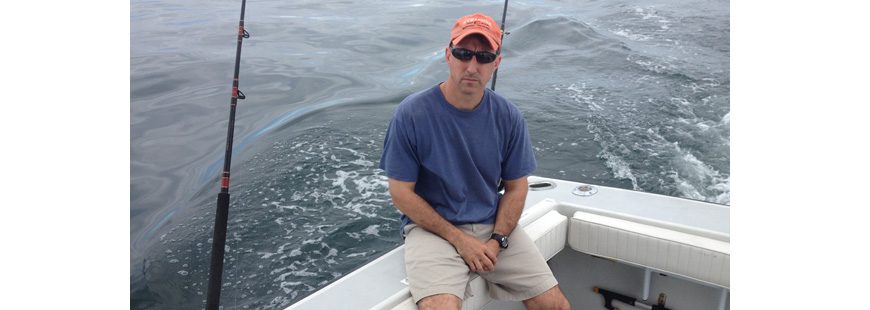This spring NOAA Fisheries released two reports that signal encouraging progress for fisheries in the Gulf of Mexico. The 2015 Status of the Stocks and Fisheries Economics in the U. S.: 2014 both documented the continuing success of the Magnuson-Stevens Act. Until fairly recently, however, many Gulf fisheries were overfished or subject to overfishing and some, like gag and red snapper were at historic lows. Today, thanks to the conservation measures of the MSA, these and other important stocks are coming back. Even better, the fisheries economics report shows fishermen’s earnings are up, state revenue from commercial and recreational fishing is growing, and employment in this economic sector continues to improve.
The most recent standouts in the Gulf’s recovery are gray triggerfish, greater amberjack, red snapper, and gag grouper. Gray triggerfish were under a six-year rebuilding plan and, thanks to the MSA, fisheries managers were able to remove it from the overfishing list at the end of 2015. Greater amberjack also came off this list only a year behind its projected 10-year rebuilding goal. Managers additionally declared gag grouper no longer overfished in April 2015. But red snapper made the biggest headlines when it came off the overfishing list last year.
Since 2000, 39 stocks have been rebuilt, most of them following the reauthorization of the Magnuson-Stevens Act in 2006. That legislation strengthened the Act by requiring fisheries managers to use the best, most current science in setting annual catch limits. The new limits have resulted in shorter seasons and reduced landings. But the short-term sacrifices are being repaid. In 2015, for example, red snapper had the largest one-year increase in quota on record. The year before, the grouper complex had the highest level of landings since 2008.
There is no question that the Act helped rebuild these and other stocks around the country. NOAA’s scientific assessments together with information reported by fishermen gave managers a good idea of stock abundance, recruitment, and mortality. This led to more accurate allowable catch limits. Also, successful bycatch rules reduced waste by one fishery of species that were targeted by another.
Gulf landings for 2014 totaled 1.4 million pounds of fish and shellfish. Revenue for total landings was over $1 billion. In some cases this robust performance stemmed from higher prices driven by greater demand, not necessarily bigger catches. The value of grouper landings, for example, grew from $24.6 million in 2005 to $28.8 million in 2014; landings themselves, in contrast, declined from 10.7 million pounds to 8.5 million pounds over the same period. Revenue for red snapper more than doubled between 2005 and 2014, from $11.3 million to $23 million, and surprisingly, growth in landings grew a respectable 40% from 4.1 million pounds to 5.7 million pounds.
Successful application of the Magnuson-Stevens Act’s conservation measures has shown the greatest benefits in the commercial fishing sector. Forty years of fisheries management under the Magnuson-Stevens Act have begun to establish a level of trust for regulations based on scientific assessment. Fisheries were not always happy with the temporary sacrifices they had to make, but as the latest figures show, this short-term pain is beginning to pay off: catches and revenue are both trending upward.
The course of this progress, however, has not been entirely straight, and impatience to land even more fish is testing the long-term effectiveness of the fisheries law in the Gulf. The predicament of greater amberjack illustrates the need for strengthening recovery measures and improving coordination of not only recreational and commercial regulations but also state and federal goals.
As early as 1998, NOAA declared greater amberjack overfished and subject to overfishing. Following that, fisheries officials made 12 attempts to put the brakes on overharvesting. But only in 2015 did this species finally come off the overfishing list, although it remains overfished. The commercial allowable catch limit was exceeded each year from 2009 to 2013. In addition, the Act has had limited success with the recreational sector, which is allowed 73% of the annual allowable catch limit. The slow recovery of greater amberjack in federal waters has been hampered by poor accountability for recreational landings: insufficient data, unchecked overfishing (primarily “high-grading” or continuing to land amberjack in pursuit of a “big one”), and a disregard for science. The result? The recreational sector for greater amberjack exceeded its sustainable quota in 21 of the 23 years between 1991 and 2013. This sort of chronic overfishing may result from a fundamental lack of information about how many fish recreational anglers are actually catching.
Despite disappointing results for greater amberjack, the law and its amendments are making a difference. Yet decades-old problems in some fisheries point to a need for further adjustments in our fisheries laws. As we navigate the upcoming reauthorization process, such lessons from the Gulf of Mexico should serve as a reminder that MSA has restored many important fish stocks, yet more can be done.
The slow rebuilding of greater amberjack shows that we should not let down our guard just now. The law, for all its accomplishments, can do even more to conserve our fisheries, support coastal communities, and help the men and women who work on the water.



Pingback: Magnuson-Stevens' Rebuilding Success in the Pacific Northwest - Marine Fish Conservation Network
just testing the comment form.